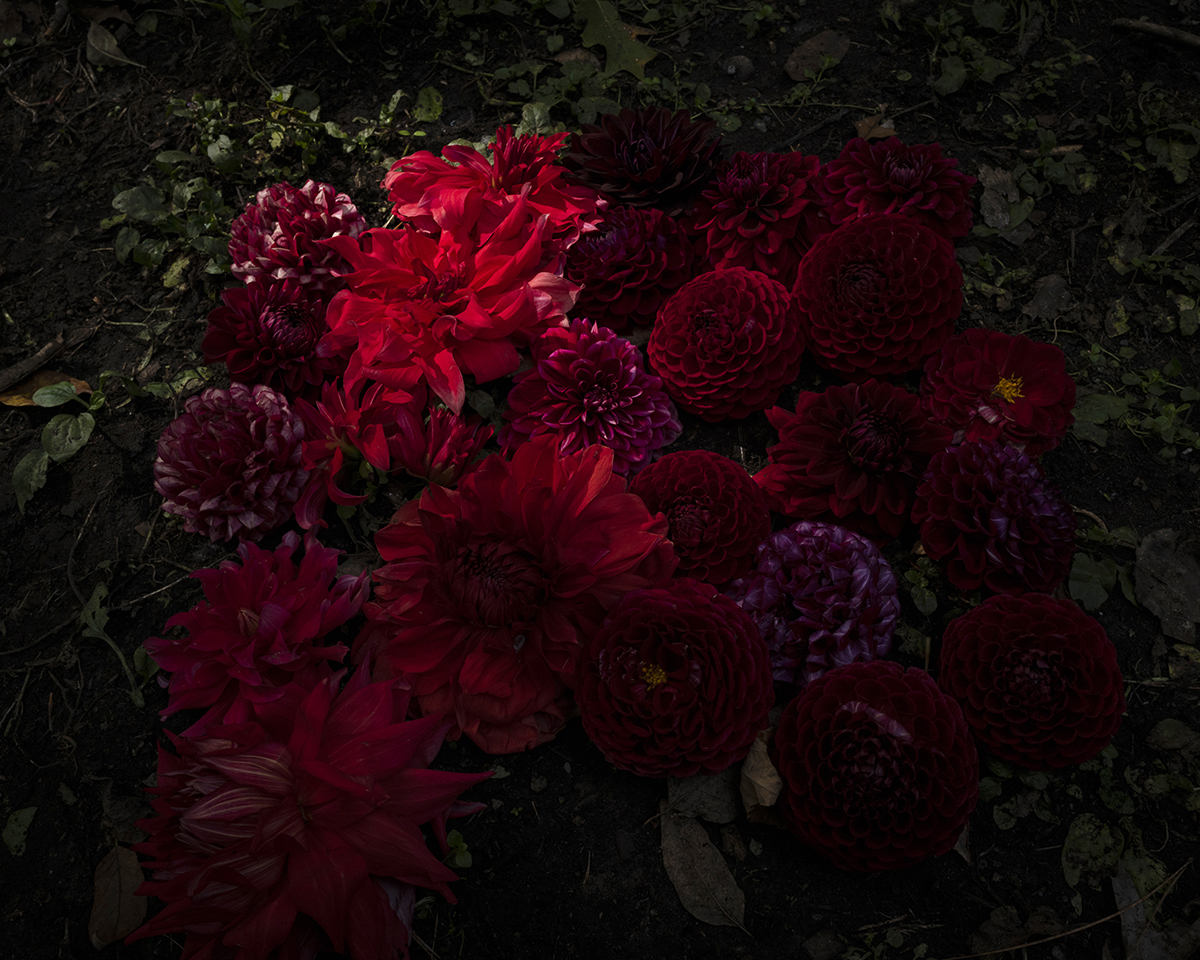
Red Dahlias by Cig Harvey
Graham Nash, of legendary music trio Crosby Stills and Nash, is a major collector of modern photography. As this year’s Photo London fair gets underway, we speak with Nash, curator and gallerist Camilla Grimaldi, and a photographer being exhibited at the fair, Sam Wright
The Collector: Graham Nash
Graham Nash is a legendary musician, songwriter, and photographer. His artistic talents have captivated audiences for decades as a founding member of iconic bands such as The Hollies and Crosby, Stills & Nash. However, Nash’s creative pursuits extend beyond music. He is also an avid photographer with a deep passion for the craft and an extensive collection.
LUX: What was it that made you begin collecting art?
Graham Nash: We were a poor family from the North of England and never had an image on a wall. Eric Burdon from the Animals turned me on to M.C.Escher in the mid sixties and I truly love Eschers’ work. When I was economically well off I began to collect Escher. His work and the work of Diane Arbus, whos’ images astound me to this day started my journey of surrounding myself with great work.
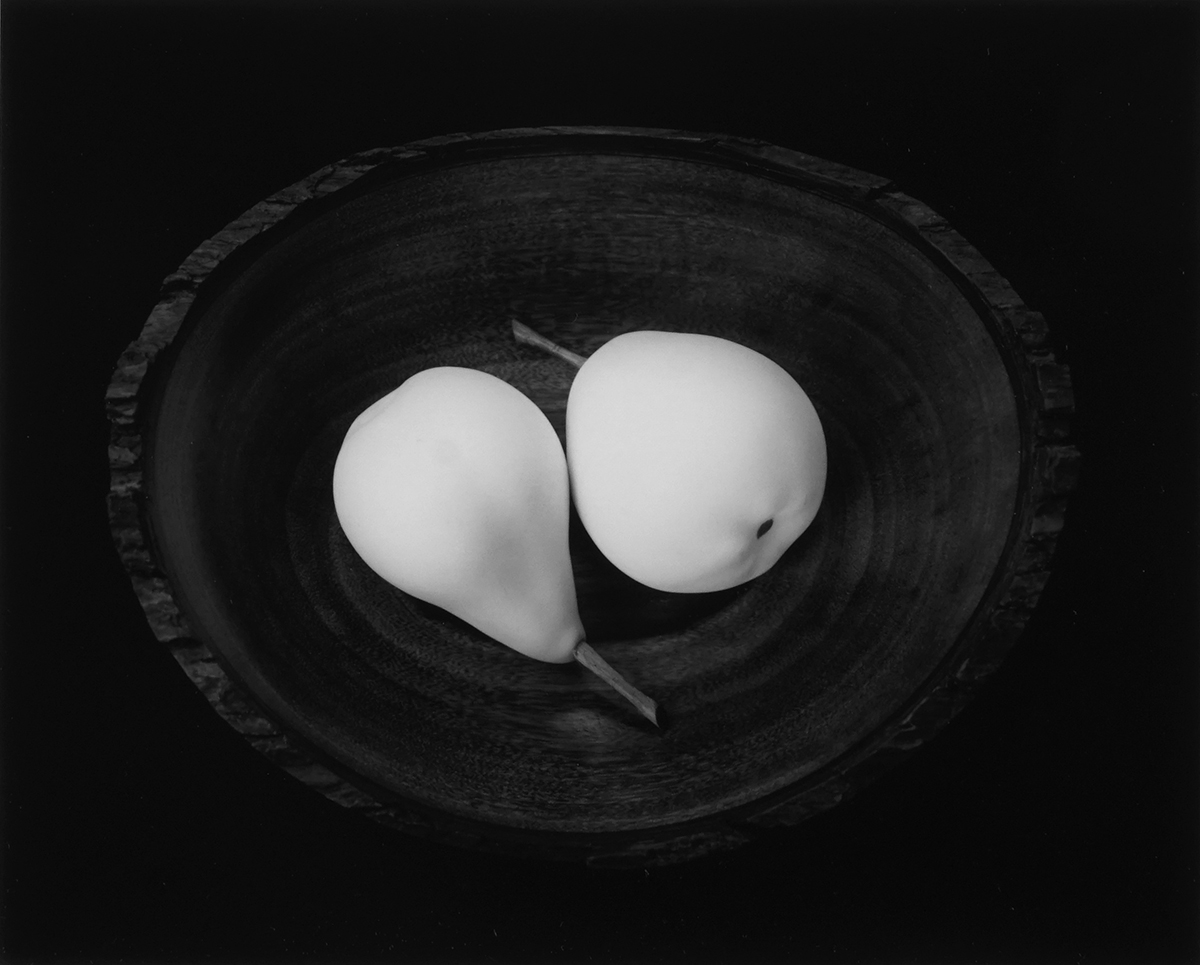
Two Pears by
Paul Caponigro
LUX: Can you tell us about a piece in your collection that has influenced your music?
GN: I find an interesting correlation between music and photography. To me, the world is made up of vibrations and I can sense that when I look at “Moonrise over Hernandez” by Ansel Adams, I can really feel the bushes and vegetation in the dark areas of the image and I ‘hear’ the cellos and the double bases, then I can imagine violins and violas in the soft, light cloud areas of the print I owned.
LUX: Have you ever regretted selling a piece?
GN: No, When I learn all that an image teaches me then I can let it go.
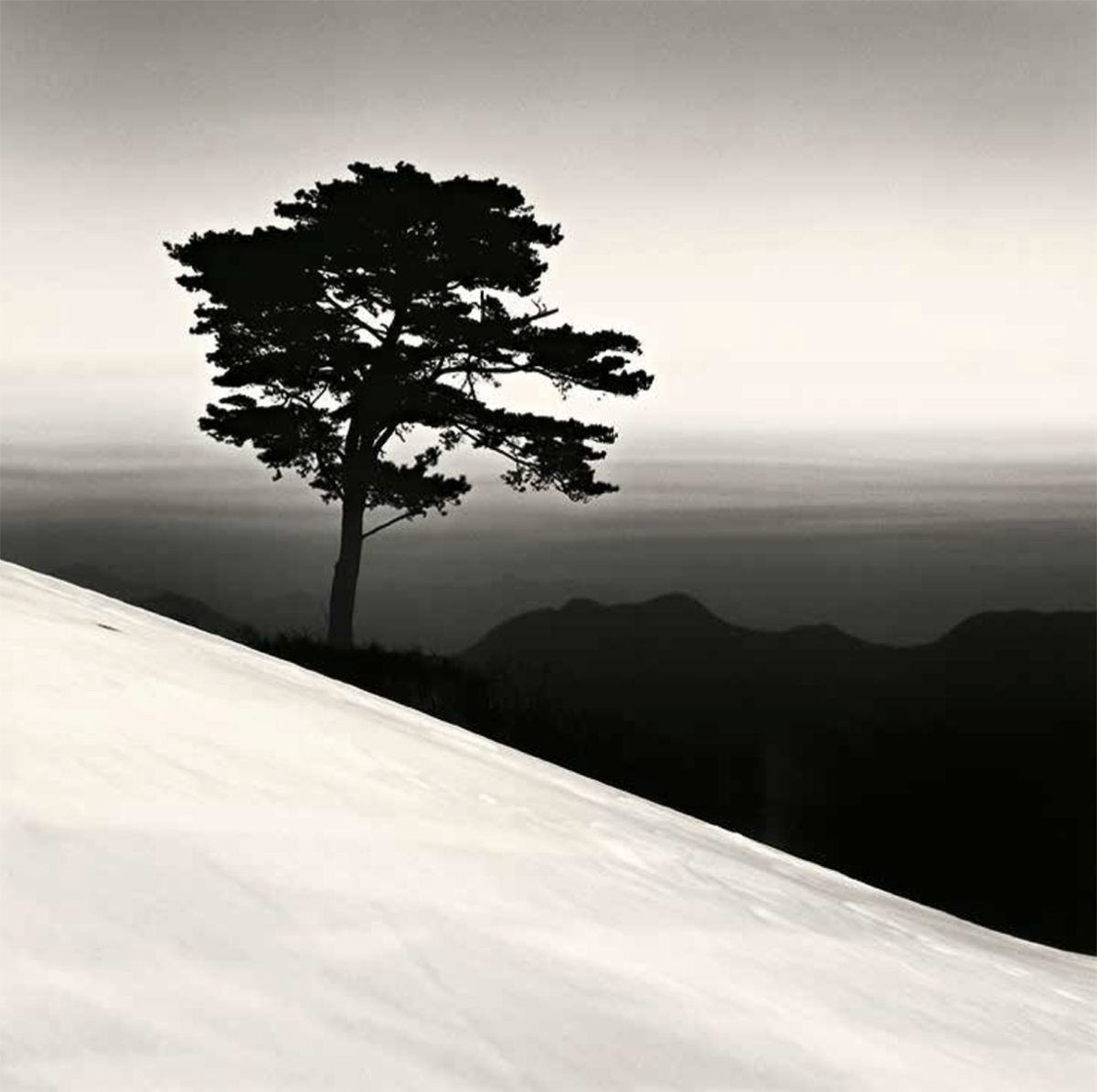
Mountain Tree, Study 1, Danyang, Chungcheonbukdo by Michael Kenna
LUX: What makes photography as a medium special?
GN: From the very beginning of humanity capturing images to the present day, great photography can show us, and the world around us, that we are indeed all interrelated in some sense, that we have to leave some sense of ourselves of having ‘been here’. From the first time that a human outlined a hand by blowing a coloured powder onto it on a wall somewhere back in the beginnings of self-expression to the images of today, photography reigns supreme.
LUX: What was your first ever camera and what do you use now? Do you think that new technology has changed your approach to the art over time?
GN: The camera that was given to me by my father was a vintage Agva. I don’t really care what instrument I’m using, I only care about what it sees. I’ve used everything from a Disney camera to 4×5’s or even an iPhone.
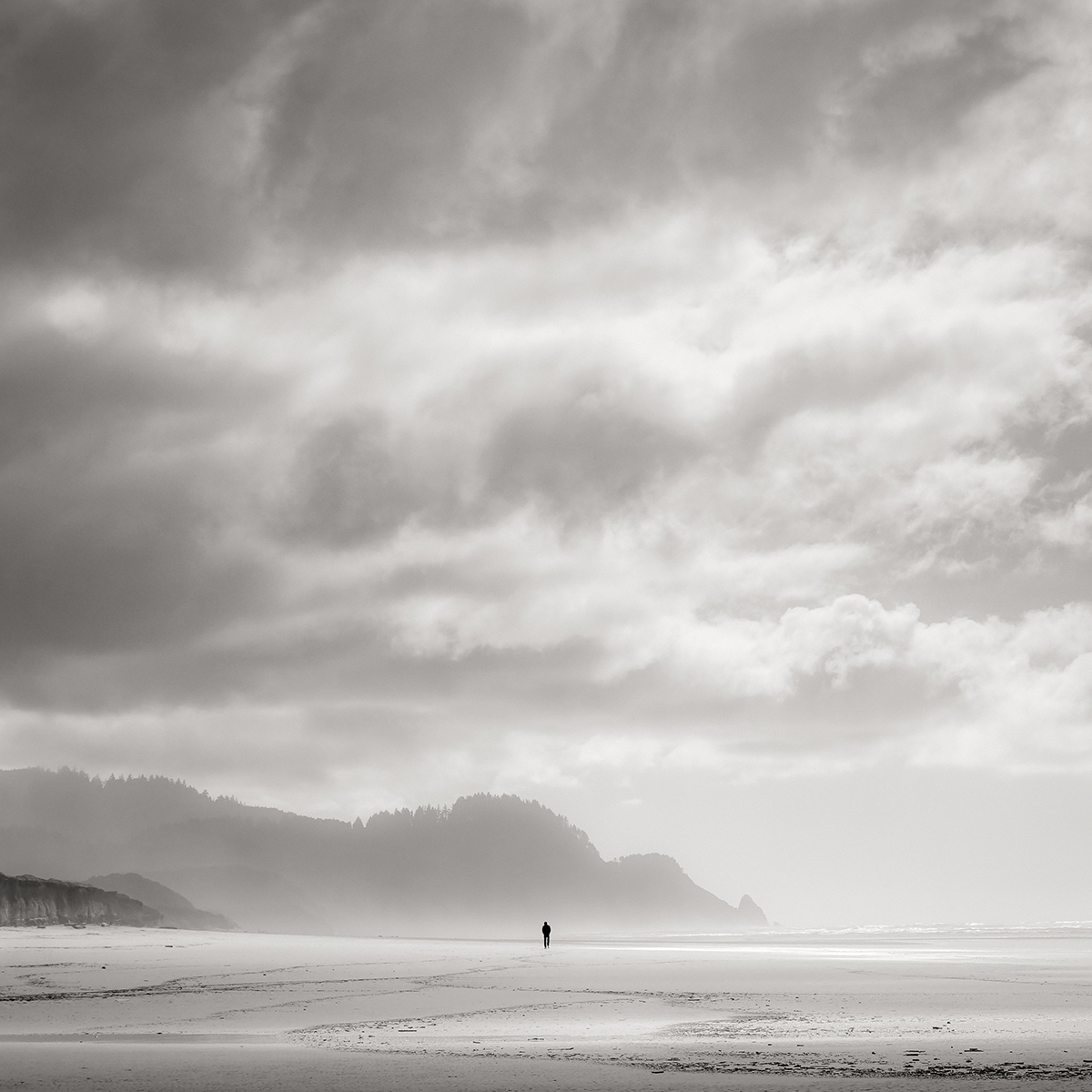
Beachwalker by Jeffrey Conley
LUX: As someone who collects originals, how do you feel about the way art and photography have become so readily available online?
GN: It could be said that the ‘immediate’ availability of being able to buy images online signals an interesting future. There’s a wonderful feeling holding an original masterpiece and I’ve been incredibly lucky in my journey of collecting and making art.
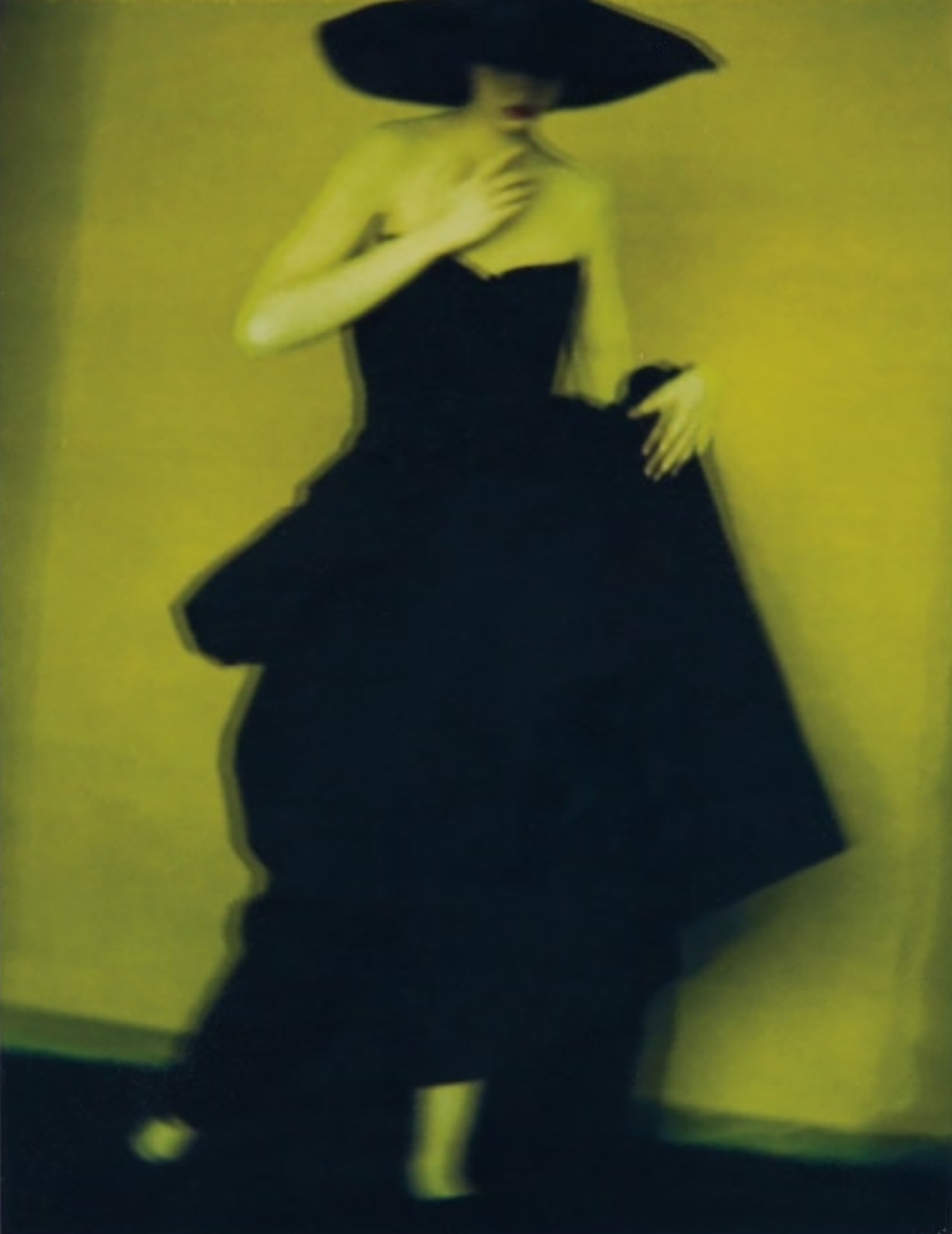
Yoji Yamamoto by Sarah Moon
LUX: You’ve said before that you only sell pieces when you have taken all the inspiration from them that you can. Is there a piece you would never sell?
GN: I was in a gallery in Los Angeles owned and run by Jake Zeitlin and I found an image of Marilyn Monroe taken when she was a teenager. It’s a lovely candid moment and one that I treasure. It was $20. I’ve sold images in the many thousands but you can’t get this image out of my hands.
The Gallerist: Camilla Grimaldi
Camilla Grimaldi has been a curator, gallerist and international art advisor for over 20 years. She began her career at institutions including Christie’s New York contemporary art department, the Guggenheim, Venice and White Cube, London. In 2004, Grimaldi co-founded Brancolini Grimaldi, a contemporary photography gallery. Now an independent entity, the Camilla Grimaldi Gallery currently works with emerging and established international artists with a strong focus on contemporary photography.
LUX: How did your upbringing shape your relationship with art?
Camilla Grimaldi: I think an influential person in shaping my relationship with art has been my father, who started collecting contemporary art, particularly post-war art, when I was very young. My earliest memory of art is from my childhood at around the age of five. My father would take me to school in the morning and, before dropping me off, he would stop in the old centre of Rome and select a visit to a different baroque church each time. We went in to admire the masterpieces of Caravaggio, Michelangelo, Bernini, and Borromini, and I remember that I was literally petrified by the beauty and grandeur of these stunning paintings and sculptures. It became clear from that moment onwards that art would have to be a part of my life.
LUX: Why do you think you are drawn to photography as a medium?
CG: Photography started as a passion in my early 20’s. I really loved fashion photography and vintage photography from Henri Cartier-Bresson, Frank Horvat and Robert Doisneau. The American photographers have also deeply shaped my vision as I admired how they used colour and depicted the US in such real and sometimes crude ways, like the greats such as William Eggleston, Stephen Shore and Mitch Epstein. In the past 20 years, the German school of Photography led by Thomas Ruff and Andreas Gursky has shaped the intellectual connection I feel to contemporary photography. The methodological approach in blurring the notion of what documenting our society really looks like and developing new conceptual frameworks with which to decipher the captured subjects and spaces.
A huge influence has also been African and Italian photography. In both instances, it is marvellous to observe their ability in developing new ways of capturing space, light, and how they portray the gaze of their subjects. In recent years I’ve been truly enjoying my work in discovering young photographers that use the medium in different ways, from installations that become three dimensional, to the use of already existing photographs combined through an archival study or books and magazines, and the use of negatives in particular and manipulated ways.
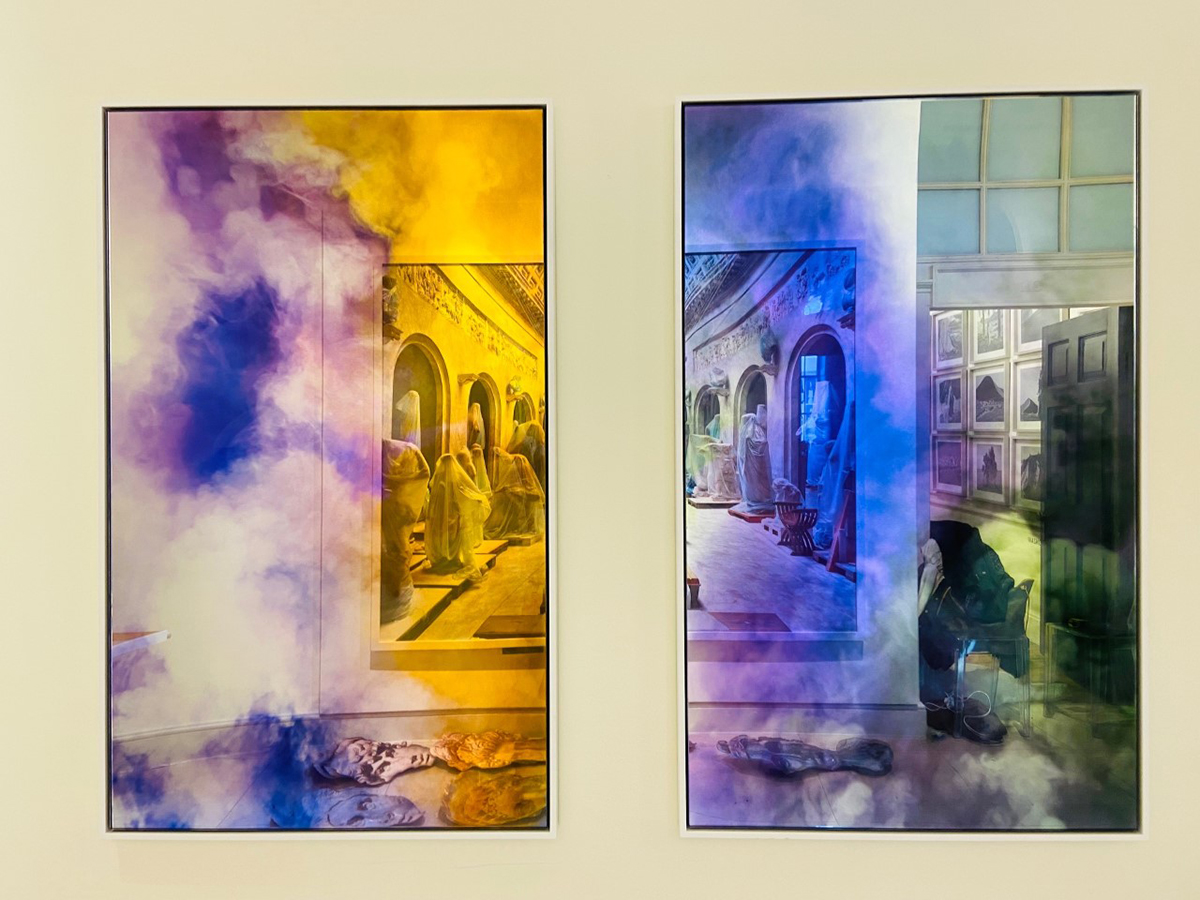
Untitled View 2014 by Goldschmied & Chiari
LUX: Everyone has a camera these days, almost everyone can market themselves as an amateur photographer. As someone who works with emerging photographers, how do you differentiate the very talented but unrecognised few from just another person with a smartphone?
CG: In my opinion, what differentiates a talented photographer from a content creator is the idea, intention, and research behind the work. It isn’t necessarily important if a smartphone or a certain type of camera was used for the final outcome. The power and strength of the photograph is determined by various technical and cultural factors, yet what I truly believe makes a work of art is the message it entails, and how this message is delivered to the world.
LUX: If you had to pick one or two photographers, who would you say are the ones to watch right now, and why?
CG: We can’t escape looking at some of the pillars of the contemporary photography scene like Thomas Struth or Andreas Gursky, and Wolfgang Tillmans who continue to experiment with the medium by breaking the boundaries of where photography sits within various artistic contexts.
In terms of the Italian scene, the duo Sara Goldschmied and Eleonora Chiari have developed a painterly approach which evolves into a three-dimensional space using a unique technique by printing the photograph directly on mirrored glass. Domingo Milella’s traditional landscape photography abstracts itself through a deep process of archeological and site specific research, whilst Massimo Listri’s architectural photographs entail a magnified and somewhat spiritual viewpoint, capturing cultural institutions we all know, but somehow obtaining an entirely different character inside his artworks.
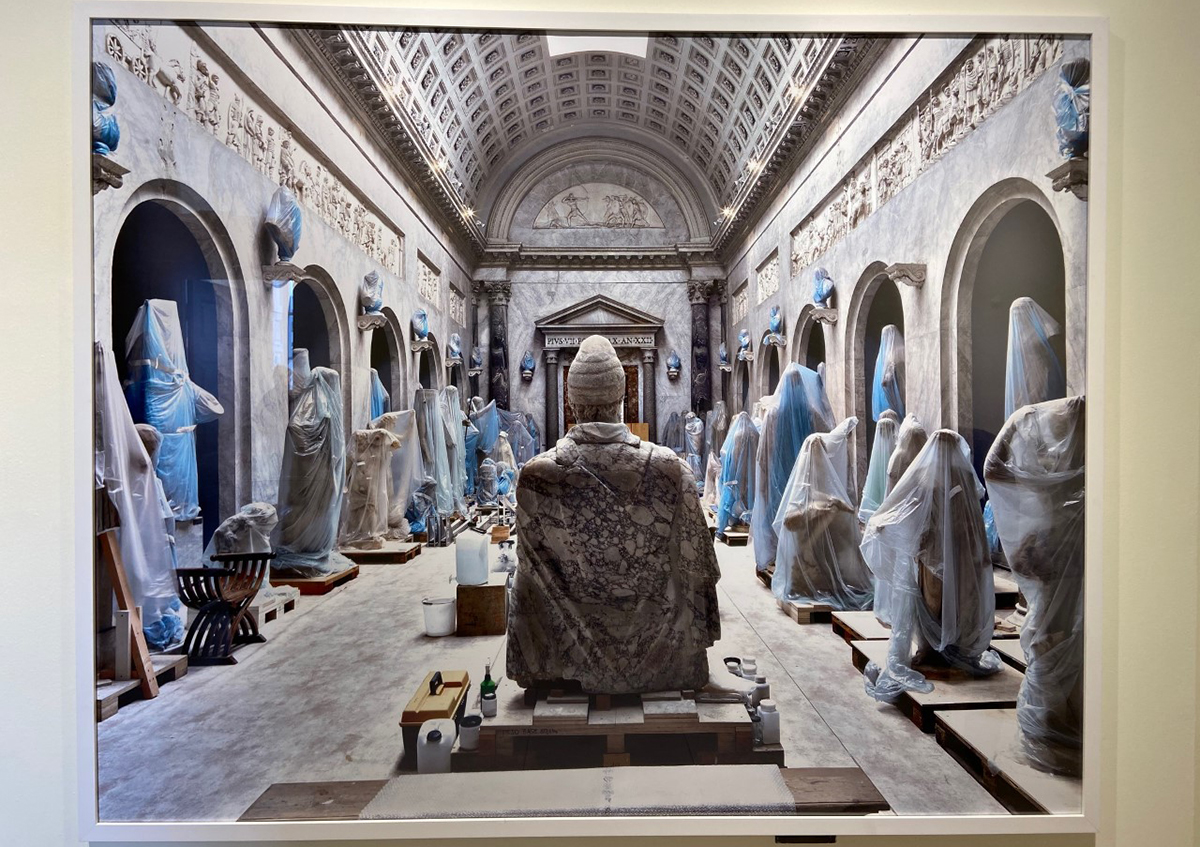
Musei Vaticani XXI, Roma 2014 by Massimo Listri
Within the Italian emerging sector, the trio Sbagliato have been operating at the confines between street and contemporary art for the last 10 years. Their proposed alternative scenarios within urban contexts develop rifts in the architectural order and use these ruptures to create new and illusionary pathways.
LUX: How would you describe the relationship between artist and curator/gallerist? Is it largely a rewarding one, or do you find there can be friction or disappointment?
CG: My long experience in this area has taught me that the basis of a good work relationship is mutual respect. I have occupied various roles in my career, spanning from curator and art advisor to gallerist. But within all these multifaceted roles, the connection to the artist becomes the main driver of a success story. It truly becomes part of your life, as you transform into an advisor of life and work at 360 degrees. This type of relationship, built in time through trust, professionalism, effort, and friendship, has made it possible to still be in contact with all the artists that I’ve been working with for over 25 years. Of course there are moments where some misunderstandings can occur, but if you strongly believe in the artist and the work, everything can be solved.
Read more: Photo London’s Fariba Farshad on Fotografìa Maroma
LUX: What would your advice be to individuals looking to start an art collection?
CG: My advice is to be curious. Attending art fairs, biennials, museums and galleries, is the start to truly immersing oneself into the art world and doing research. Contact an art advisor that you trust and is capable of showing you around and helping you discover and understand your taste. Starting an art collection is something exciting, it gives you joy. Art becomes part of your everyday life and it elevates all sorts of feelings.
LUX: What is your personal philosophy on art as a gallerist, curator and advisor? Has it developed over time?
CG: Through my long professional experience in the art world, I now have various mixed feelings concerning it. As a gallerist it has been a big challenge for me especially when I opened the first contemporary photography gallery in Rome in 2005. The art market in Rome was based on an old school type of aesthetic, and surprisingly my gallery was a success story during a time in which photography was not yet considered a quality medium of contemporary art. That experience has been very demanding and very exciting at the same time. Today as a curator and advisor my situation is very different, and I am less constrained by these dynamics in the way I work. I can freely select the projects that I love and that I strongly believe in, and I have more time to research, study, and go on studio visits. I’m very lucky that I can choose the curatorial projects and the marvellous artists that I work with.
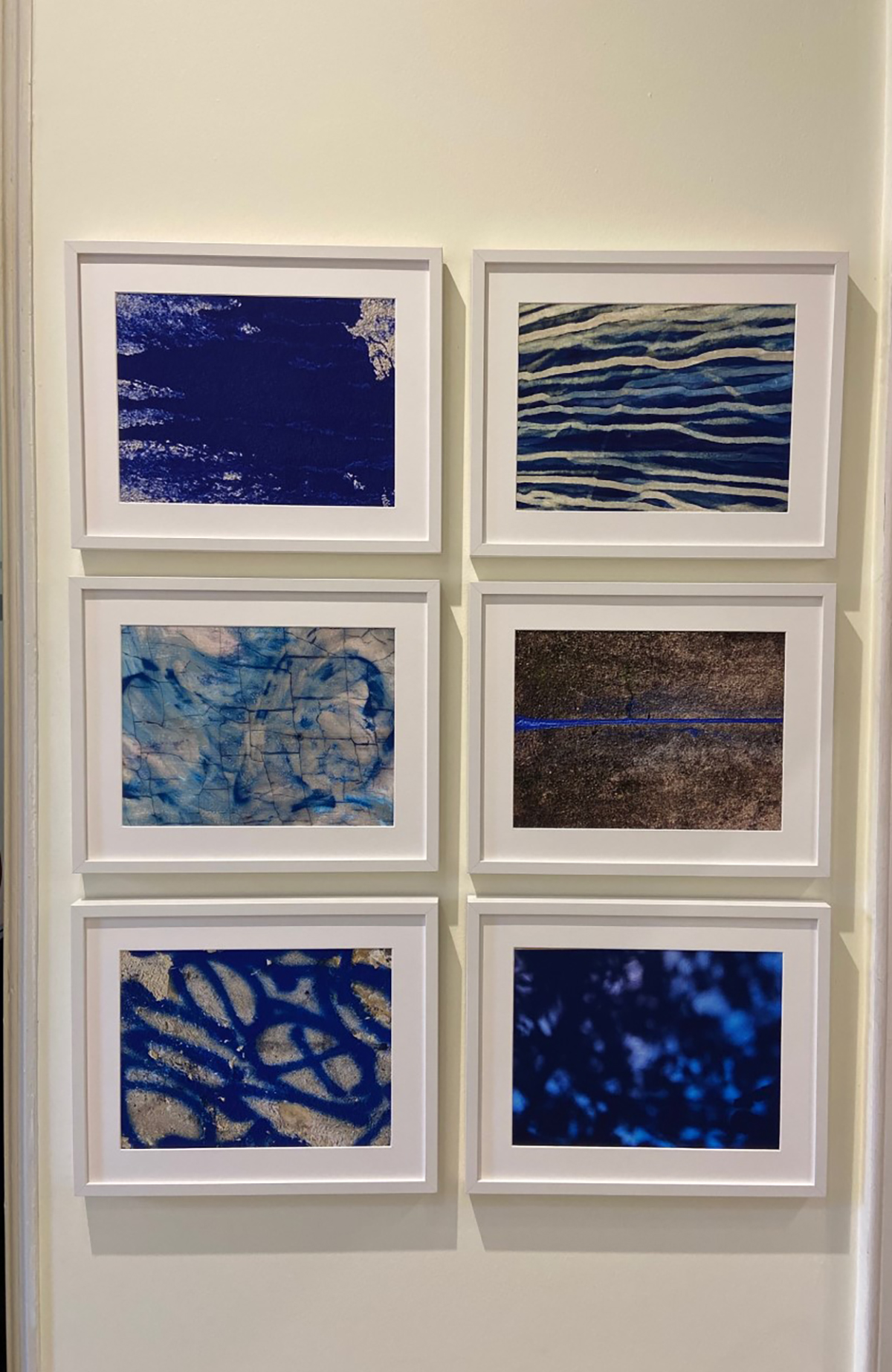
Total blu, 2022-2023 by Domingo Milella
Back when I was a gallerist, I started at a very young age so of course my notion on what art meant has changed over time. Back then my first approach was to develop my relationship with artists, it was all about sharing ideas and being part of the creative process of the artists. It was about creation and identity.
As a curator and art advisors now, I have more experience, and whilst my initial feelings have been kept intact, I now know how to contribute on a deeper level, culturally and strategically, helping my artists to rise within the contemporary art market.
The Photographer: Sam Wright
Sam Wright began his photography career photographing DIY punk gigs in pub basements and clubs in Sheffield. He went onto study at Newcastle School of Art and Design, and his work has now been recognised by respected awards and galleries including The NPG, D&AD Awards, Lürzer’s Archive, Creative Review, Its Nice That, Palm Studios and The AOP Awards.
LUX: What was your introduction to photography?
Sam Wright: My first experiences of photography centred around the Sheffield punk scene in a pub called The Cricketers Arms, where DIY punk gigs would be put on. It was a driving scene full of big characters and lots of energy. I found myself focusing more on the crowds, not just well as the bands. These early experiences allowed me to explore photography in an exciting environment, as well as inspiring a DIY ethos that the whole scene was built around. It was through that scene that I met Ben Goulder of New Dimension who published my new book “The City of the Sun”. Collaborating with New Dimension always feels like a perfect fit. Myself and Ben have a long history, not only creating publications together but growing up together and forming our views on the world through bands in the Sheffield punk scene. The tongue in cheek motto was always “DIY or Die” which to some extent still runs through both our approaches to creative work.
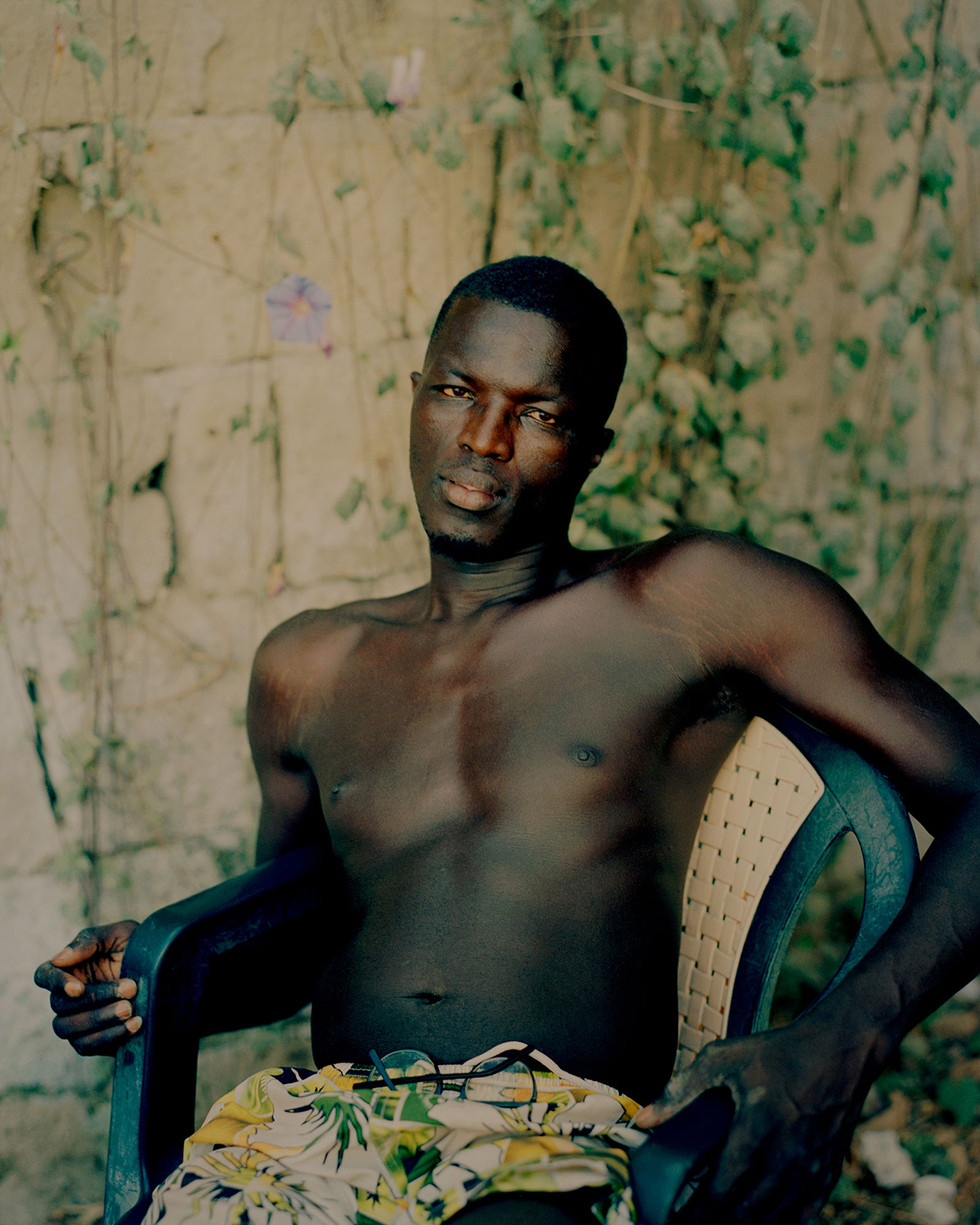
From the Welcome to Napoli series by Sam Wright
LUX: Tell us about your first ever camera, and how it compares to the camera you use most frequently now.
SW: My first camera was an early 2000’s digital point and shoot. It was limited in quality but the small size and low value meant I had it with me at all times.
I now shoot on a medium format film camera which is a very different tool. It is quite heavy which brings a slower way of shooting and the expense of film brings more consideration when choosing what to photograph. This camera has become a big influence on the way I shoot. The work in my new book was shot on this camera and brings an element of consideration to the work.
LUX: Your projects are often named or centred around a particular place – London, Seoul, Naples, your hometown of Sheffield. What role do geographic locations play in your work?
SW: Geography plays a huge role in my work and I think the same goes for a lot of photographers. For me, it provides a backdrop and narrative for the characters in my photos to live. It builds on the story that I am trying to invoke with my viewer.
Follow LUX on Instagram: luxthemagazine
Naples for example was the focus of my latest project and book, “The City of the Sun”. The work I shot there is an attempt to capture this character and attitude providing the viewer with a tangible glimpse into the city and the people that call Napoli home. I want the work to feel textural, invoke the senses and draw the viewer’s mind into the special feel of the city.
LUX: You often capture unique, striking individuals in your pictures. When you look at a person, what makes you want to photograph them?
SW: This is a tough question, but I guess I am drawn to people that have an interesting look from first view. I then often find that they live interesting lives and have a unique place in the world. Maybe this comes through in the way they look or hold themselves, but it’s hard to pinpoint.
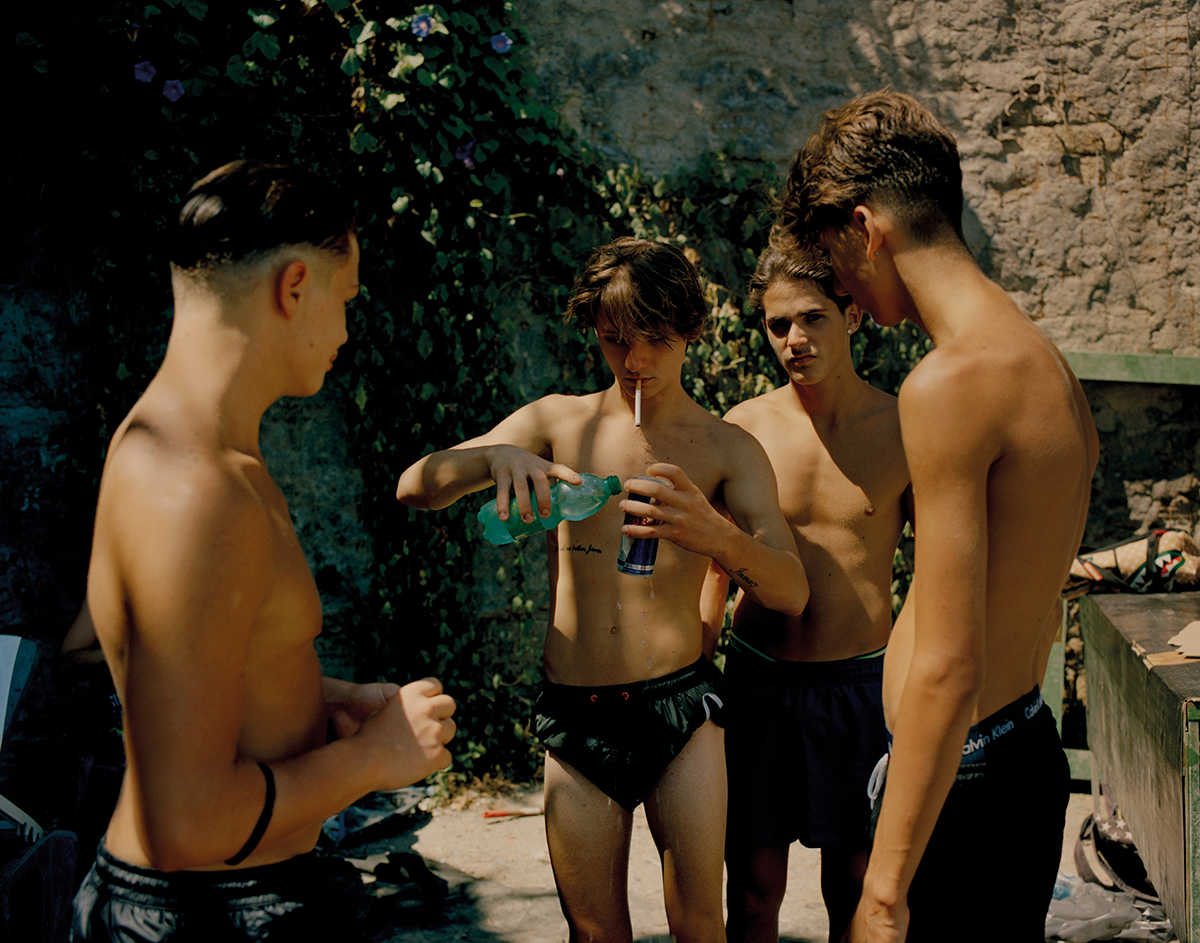
From the Welcome to Napoli series by Sam Wright
LUX: Tell us about the way you use and capture light in your photography.
SW: Light is a very important part of my work and something that I am always very particular about throughout my work. It can totally change the feel and emotion of a shot and can provide depth, texture and magic to an image.
LUX: How has your stylistic approach developed throughout your career?
SW: My style has developed and changed a lot since I started my journey as a photographer. The core values and interests have remained the same but as I have learnt more about photography and light, I have shaped a style that feels representative of what I like aesthetically and how I view the world.
LUX: Which artists, photographers or otherwise, have influenced and inspired you the most?
SW: I draw inspiration for lots of different mediums. Cinema, music, everyday life, and also photography feed into my visual inspiration. I love how directors like Terrence Malick and Francis Ford Coppola use a camera to create their work. I have always loved classic American colour photographers such as Eggleston and Shore. I love how Chris Killip made art through everyday life and photographers like Tom Wood. The list could go on!
LUX: In your opinion, what is special about photography as a medium?
SW: I love the accessibility of photography. It’s available to almost everyone today and I think it is a brilliant way to express your creative drive. I love the way it gives you access and a reason to meet new people and experience new places, it provides purpose in exploring new communities and cultures.
LUX: Can a photo tell a story? If so, which of yours tells the best?
SW: Yes! I love the way a photo can tell a story, evoke an emotion or bring on a specific feeling – this is something that I strive to achieve throughout all my work. I love the way that the viewer becomes in control of the narrative with a photo and can take its cues to build their own perception of what they see and what the artist has set out to achieve.
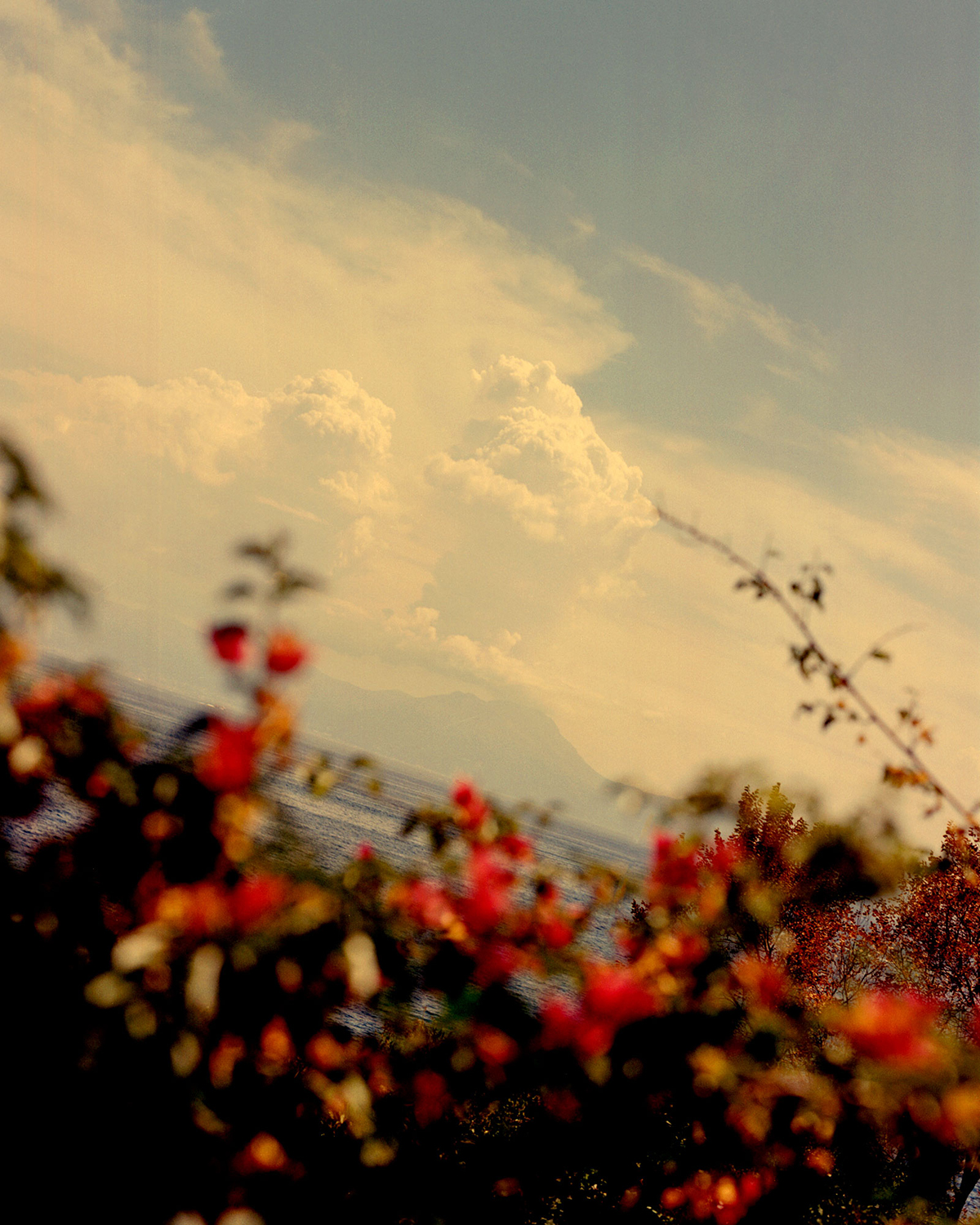
From the Welcome to Napoli series by Sam Wright
In my new book there is a whole section of work shot around bays and city beaches that offer moments of calm and tranquillity; the chaos of the city is left behind but the energy is still high. I tried to capture the narratives and group dynamic of the individuals and tell the story of these unique areas of Italy.
Photo London, Somerset House, London, 11th-14th May 2023
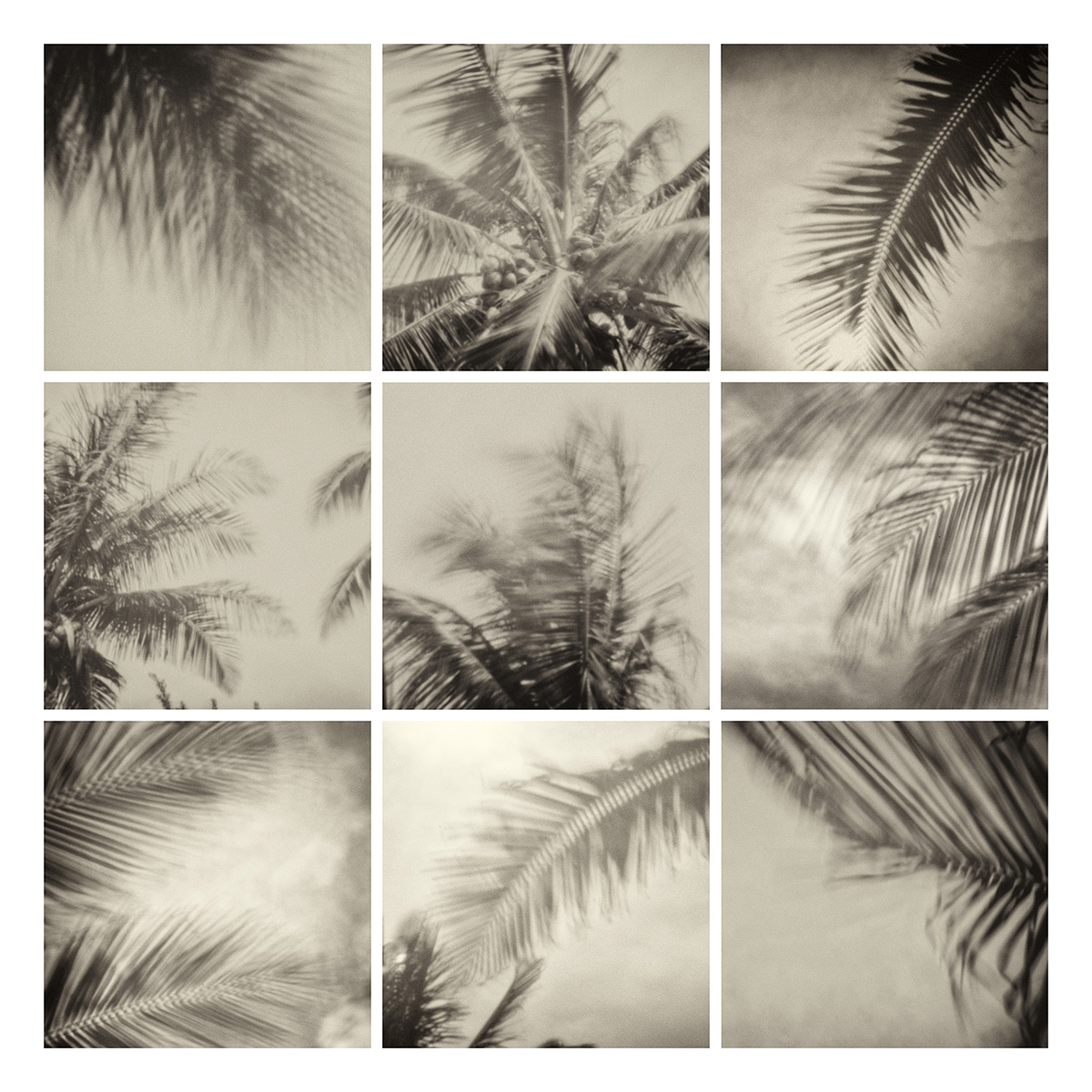
Estenopeica Digital I by Javier Hinojosa, 2022
Fariba Farshad is co-founder of Photo London which since its inception eight years ago has become one of the most respected photography fairs in the world. This year’s edition is the strongest yet with 125 exhibitors from 56 countries worldwide and a sponsorship portfolio that includes the Royal Bank of Canada as Principal Partners and Belmond as Presenting Partners. Here, Farshad speaks to LUX about the future of the fair and her latest curation project, Fotografìa Maroma- an exhibition commissioned to capture the environmental beauty of the Riviera Maya in Mexico where Maroma, A Belmond Hotel, will reopen later this year
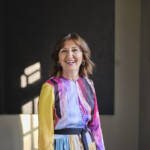
Fariba Farshad © Laura Pannack
LUX: How did the Fotografía Maroma project come about?
Fariba Farshad: I was asked to curate a show featuring a group of important Mexican artists. I was delighted to be asked, but at the same time a little challenged by the idea. I understand and love Mexican photography. It has a rich photographic tradition and is an increasingly important market for contemporary photography with a lot of good artists who are represented internationally by important galleries – but for me to visit and work with a culture that I don’t come from myself was a big undertaking. So it was great to be able to collaborate with Patricia Conde who has one of the most known photography galleries in Mexico.
Between us we selected four artists: two very established artists, one who had been working in very different industries including advertising and one young emerging photographer. We asked them to travel to Maroma, to Riviera Maya, and develop their own artistic responses to the wild beauty of the pristine Mayan environment. As for the images, the brief was completely open. Moreover, they were only given two weeks to work in the area and to work with the natural surroundings. It was not necessarily the best time of year – not exactly ‘beach weather’, which was interesting because most of the time the weather there is fantastic! Of course, it was a professional assignment, not a holiday. They were supported by a fixer and the hotel, and they were free to work wherever and however their inspiration took them.
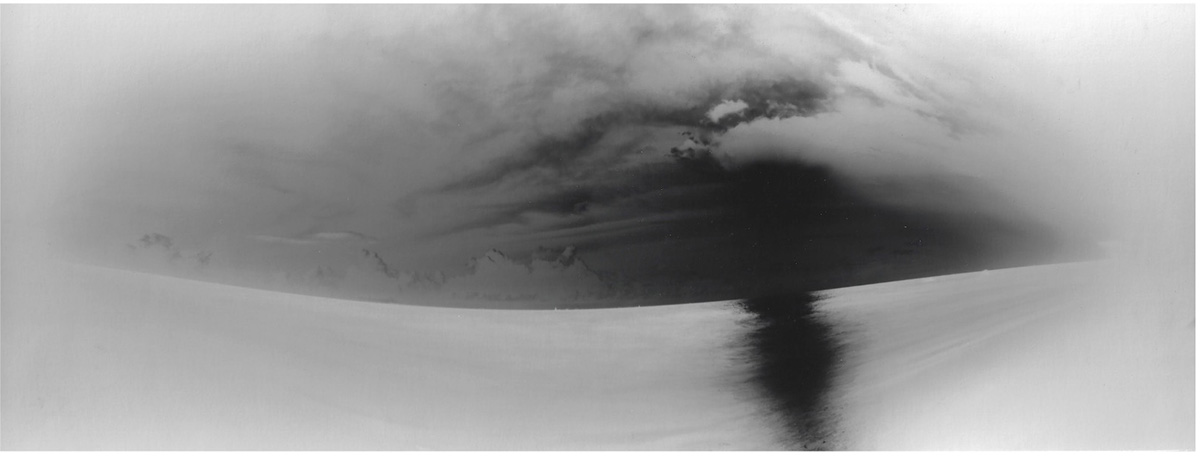
Horizonte I by Margot Kalach, 2022
LUX: What do you find particularly interesting about the Rivera Maya?
FF: What is particularly interesting is that the four artists found themselves in a wild and unusual working environment. Not at all in their comfort zone. Patricia Lagarde, for example, is very much an established artis whose practice is studio based. Asking her to work in a different, even awkward state was a very interesting challenge for us and for her. All of them were the same in a way, like Patricia, they were mostly studio-based. Javier Hinojosa, is a highly regarded artist whose studio- made portraits in black and white justly famous, He was sent to work in the wilderness and we were fascinated to see what he came back with. The same was true of Ilan Rabchinskey who says of his minimalist studio practice ‘My aspiration is to achieve simplicity’ For him working with nature meant ‘managing uncontrollable factors’. The result was a series of, creating 3D objects allowing the beautiful natural light of the place to create a play of shadows and then photographing the results. The final member of the group was a talented emerging artist Margot Kalach, who was interested in working with light to create digital artworks.
Follow LUX on Instagram: luxthemagazine
The other interesting aspect was the time frame. It was the first time that I have worked with artists and commissioned new work with such an intense deadline. I actually think the reason it worked so well was because they didn’t have too much time to edit the result, and therefore it was very continuous and very creative. I am really delighted by the result.
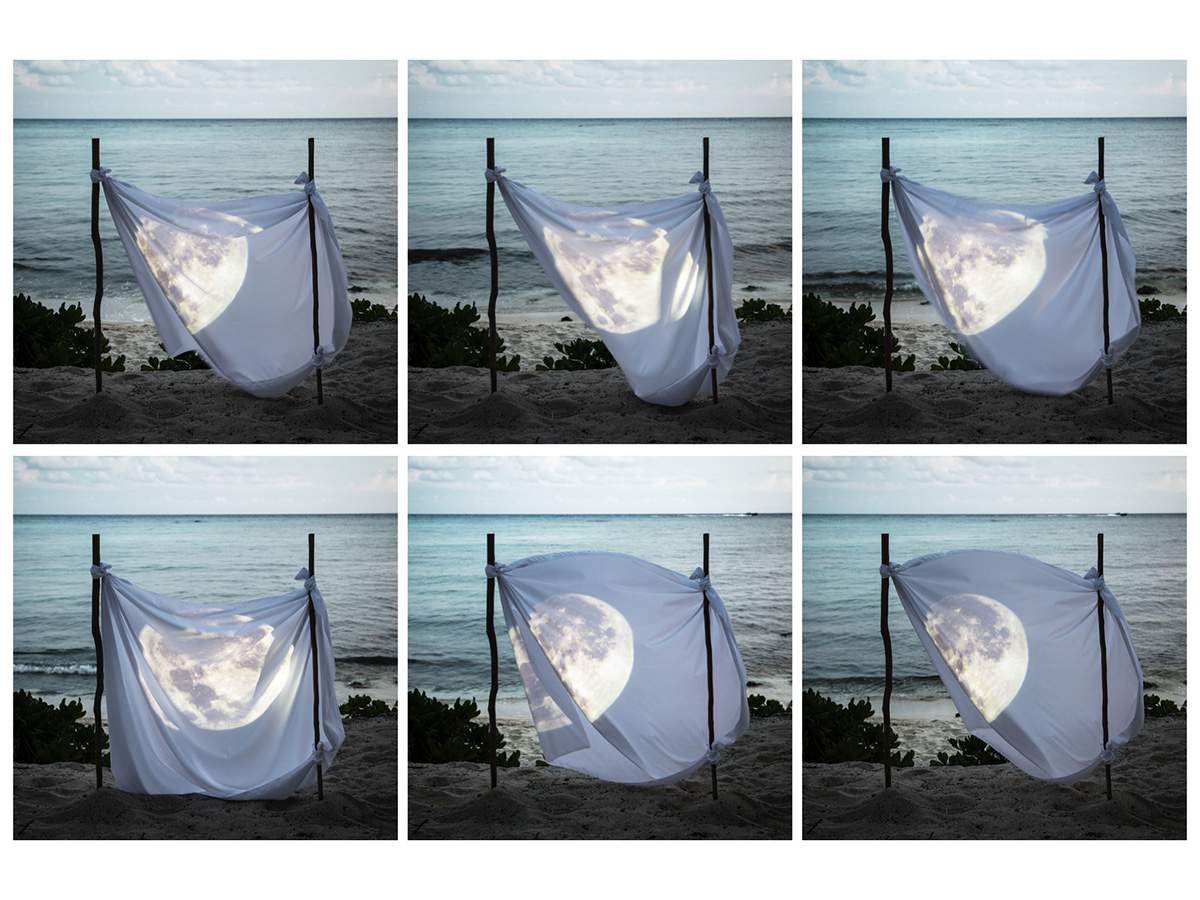
Trapping the Moon by Patricia Lagarde, 2022
LUX: What did the artists create?
FF: Patricia ended up capturing the moon by spreading a piece of white cloth and taking the photo of that reflection, and then hanging it in the wind before photographing it again. It was a performance installation piece in photography; fantastic and totally different to anything she’s done before.
Javier took these amazing photographs of the waves in one series and plants in another He then deconstructed the images and reassembled them into grids of eight pieces and in doing so created a completely new image. I found his process fascinating. He used his iPhone on the water, creating a pinhole with his phone, and used all sorts of experimental ways of dealing with technology, different cameras as well as the phone to create new images. He had not worked this way before this commission.
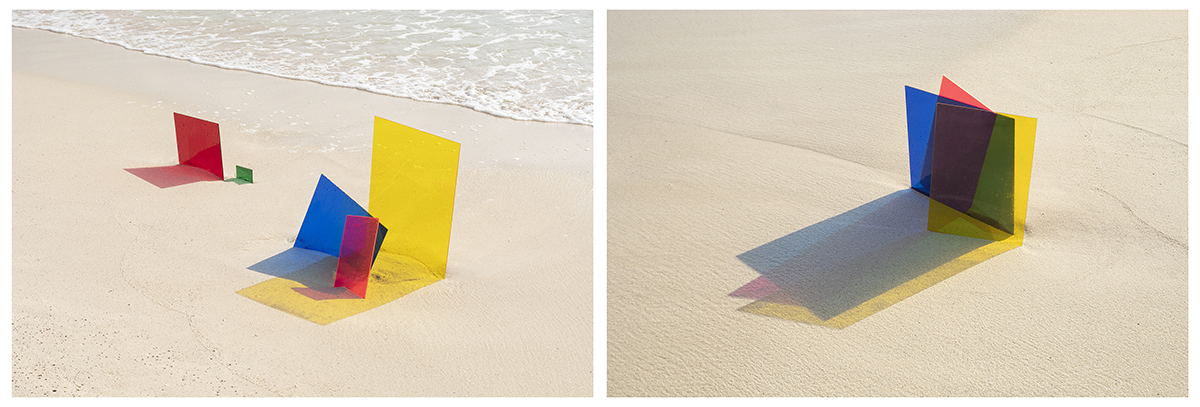
Drift and Direction from A Vessel for the Sun by Ilán Rabchinskey, 2022
Ilán took 3D objects from his studio to the beach and positioned them, waiting for one set of shadows to be created by the wind, the water, and the beach, letting nature take over the process of painting with light.
I was really excited to see what Margot, would come up with using digital technology. In fact, she chose to create a pinhole camera using a paintbox. She basically turned her bathroom into a darkroom, and the result was absolutely amazing: the sort of large print that uses the depths and the dreamy capture of the water. She totally went for very early technology rather than pursuing her in-studio high-tech approach. It was fascinating and she absolutely loved it. I think it is going to have a very long lasting effect on her work.
Fotografia Maroma, the show they made together, opened at Art Basel Miami Beach in the design district in December, then went to Mexico during Zona Macao, and is now coming to Photo London.
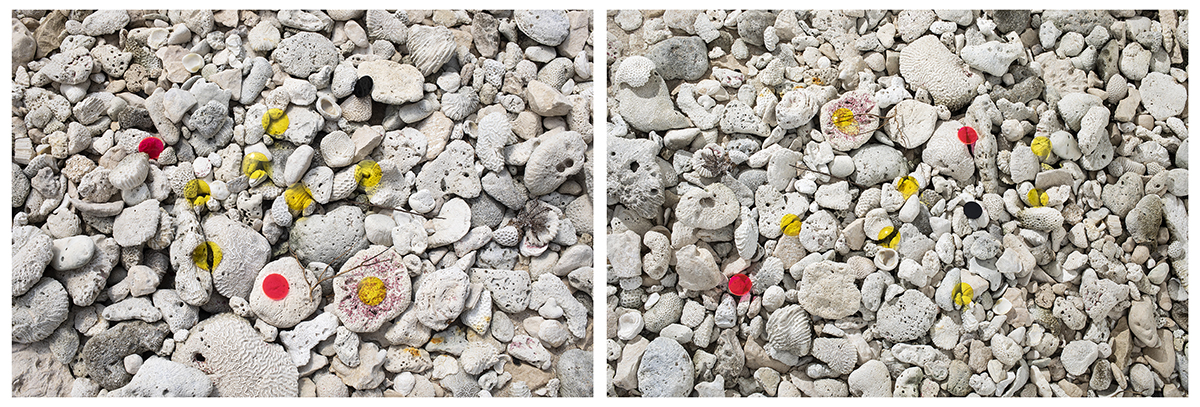
A Particle, A Wave from A Vessel for the Sun by Ilán Rabchinskey, 2022
LUX: This year’s Photo London has seen a significant evolution and in fact a couple of significant new partners and sponsors. Could talk us through that?
FF: Photo London 2023 is our 8th edition. It has grown stronger with each passing year. Even when the pandemic hit in 2020 when we were two months out from the Fair, we took the opportunity to develop our Academy programme of talks and launch a successful online magazine (now in its 100th edition) and ran a fantastic and very successful online Fair in September 2020. Our partnership with Nikon was sealed during the pandemic and we took that to be an important endorsement of the strength of Photo London.
This year we have three new partners: Hahnemuhle came on board earlier in the year and with them we launched a new Photo London Hahnemuhle student award; we just released the shortlist for this. We are also continuing our Emerging Photographer of the Year Award with Nikon. Belmond have come on board as Presenting Partner having successfully partnered with us on Fotografía Maroma. And finally the most recent addition to our partnership portfolio is the Royal Bank of Canada, who recently became our Principal Partners. They are planning a great series of activations this year. They have a strong tradition of collecting and supporting emerging artists so in many ways are the perfect partners for Photo London. We are really looking forward to working with them and developing this relationship. These are very significant changes for Photo London. This fantastic group of sponsors shows how Photo London has really established itself as a key cultural event both in London and internationally.
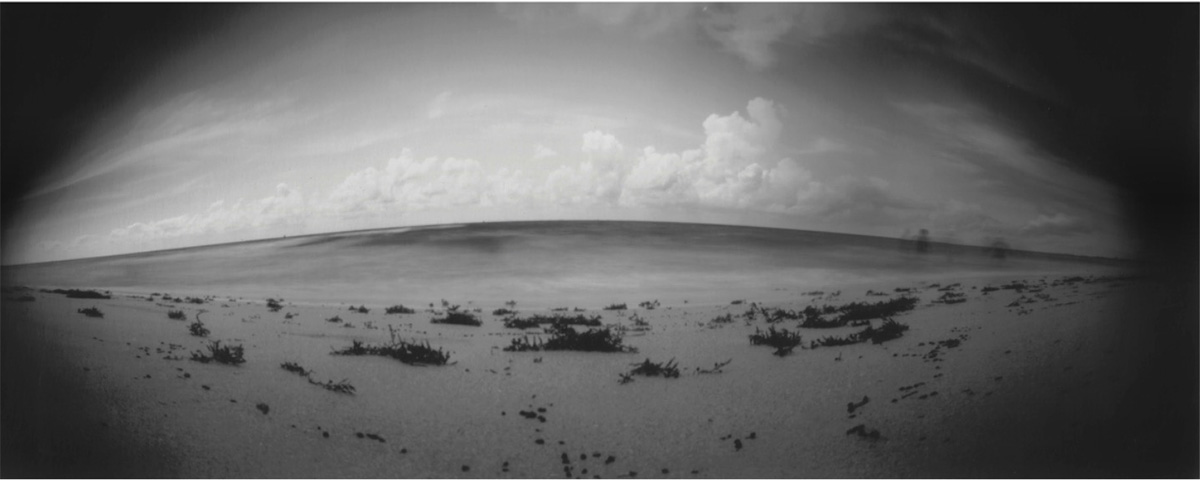
Horizonte II by Margot Kalach, 2022
LUX: Between 2015 and now, pandemic notwithstanding, have you seen a noticeable shift in consciousness among photography collectors?
FF: Certainly, during the pandemic some galleries did good business. Photography collectors are always very cautious, taking their time, doing the research, looking around, and so the online presence of galleries sort of suited them. They were actually very active.
Read more: Sam Dalrymple and Durjoy Rahman On Cultural Reconnections Post-Partition
I think we see very much a shift towards contemporary, younger collectors, in London especially, and that is exactly what we have been working on for the last eight years. We wanted to look to the future and create a platform for future photography, because photography is based on a continual process of experimentation and reinvention fuelled by fast-moving technology. It’s a relatively young medium, changing rapidly, and is finding its way through all sorts of directions. Our vision has always been to create a platform for younger galleries, younger artists, and, alongside that, educate and develop a pool of younger collectors.
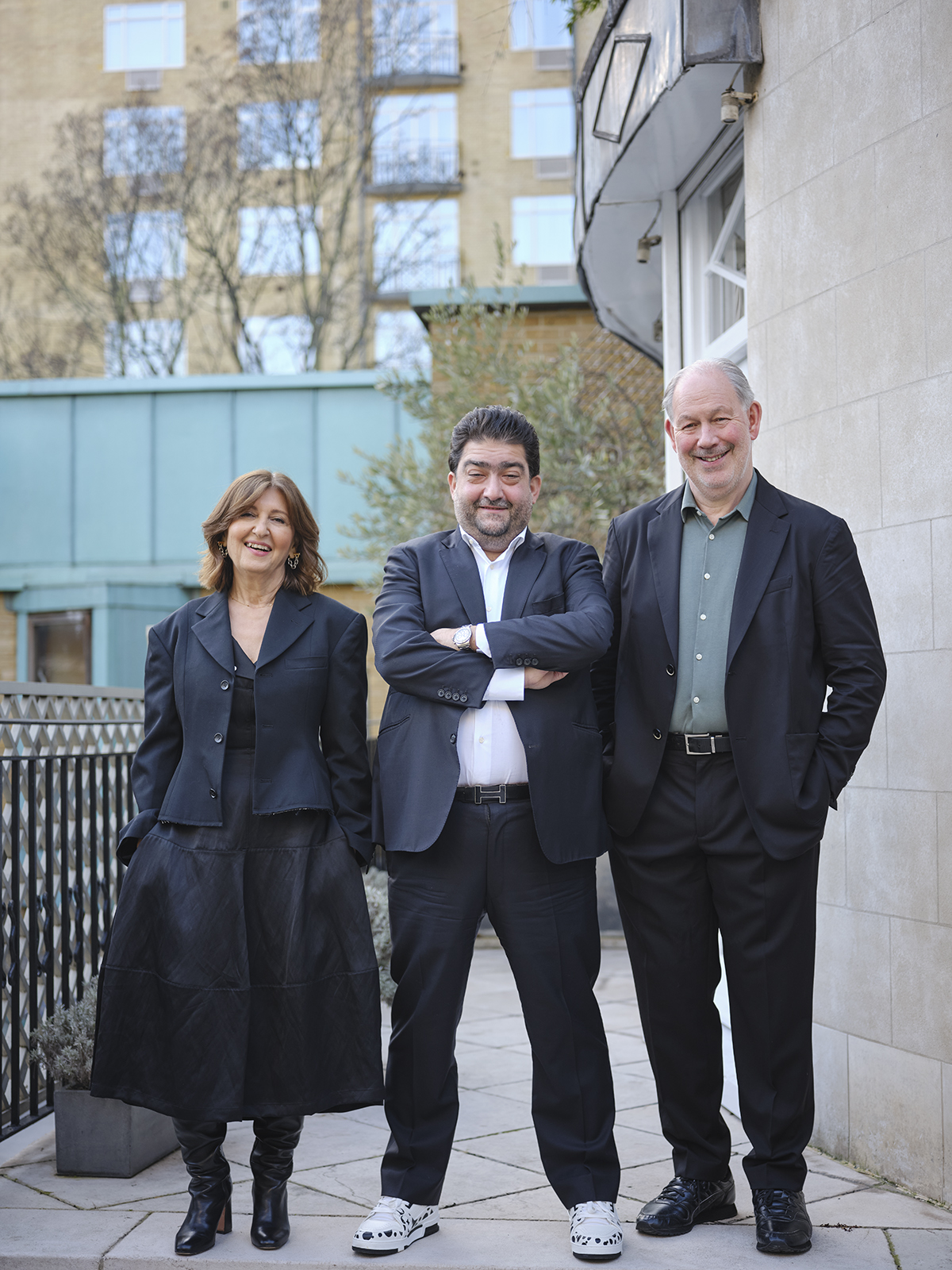
Photo London founders Fariba Farshad (left), Michael Benson (right) with new director Kamiar Maleki
But overall, the art world changed so much after the pandemic, and many galleries found it more difficult to sustain themselves. Some moved to smaller places, some worked online. Everything in our world is generally shifting and still hasn’t quite returned pre-pandemic levels, though this year’s Fair shows that we are almost there. As a business, as a Fair, you absolutely need to be conscious of all these changes and create space for the opportunities they bring.
Photo London, Somerset House, London, 11th-14th May 2023
Recent Posts
Archives
- November 2025
- October 2025
- September 2025
- August 2025
- July 2025
- June 2025
- May 2025
- April 2025
- March 2025
- February 2025
- January 2025
- December 2024
- November 2024
- October 2024
- September 2024
- August 2024
- July 2024
- June 2024
- May 2024
- April 2024
- March 2024
- February 2024
- January 2024
- December 2023
- November 2023
- October 2023
- September 2023
- August 2023
- July 2023
- June 2023
- May 2023
- April 2023
- March 2023
- February 2023
- January 2023
- December 2022
- November 2022
- October 2022
- September 2022
- August 2022
- July 2022
- June 2022
- May 2022
- April 2022
- March 2022
- February 2022
- January 2022
- December 2021
- November 2021
- October 2021
- September 2021
- August 2021
- July 2021
- June 2021
- May 2021
- April 2021
- March 2021
- February 2021
- January 2021
- December 2020
- November 2020
- October 2020
- September 2020
- August 2020
- July 2020
- June 2020
- May 2020
- April 2020
- March 2020
- February 2020
- January 2020
- December 2019
- November 2019
- October 2019
- September 2019
- August 2019
- July 2019
- June 2019
- May 2019
- April 2019
- March 2019
- February 2019
- January 2019
- December 2018
- November 2018
- October 2018
- September 2018
- August 2018
- July 2018
- June 2018
- May 2018
- April 2018
- March 2018
- February 2018
- January 2018
- December 2017
- November 2017
- October 2017
- September 2017
- August 2017
- July 2017
- June 2017
- May 2017
- April 2017
- March 2017
- February 2017
- January 2017
- December 2016
- November 2016
- October 2016
- September 2016
- August 2016
- July 2016
- June 2016
- May 2016
- April 2016
- March 2016
- February 2016
- November 2015
- September 2015
- June 2015
- May 2015
- March 2015
- September 2014
- August 2014
- July 2014
- May 2014
- April 2014
- March 2014
- February 2014
- January 2014
- December 2013
- November 2013
- October 2013
- September 2013
- August 2013
- July 2013
- June 2013
- April 2013
- March 2013
- February 2013
- September 2012
- July 2012
- June 2012
- March 2012
- February 2012
Categories
- Adventure Travel Issue
- Aesthete Issue
- Architecture
- Art & Design
- Art & Photography
- Art collectors
- Autumn 19
- Autumn/Winter 2020/2021
- Autumn/Winter Issue
- Bespoke Issue
- Business
- Cars
- Cars & Collectibles
- Case Study
- Celebrities
- Culture
- Culture Issue
- Design Issue
- Dining Issue
- Earth Issue
- Family Issue
- Fashion & Jewellery
- Features
- Food
- Future Luxury Issue
- Health
- Hedonism Issue
- Image Issue
- Italy Issue
- Latest Stories
- Leaders & Philanthropists
- Leaders Slider
- Love Issue
- Luxury Travel Issue
- New Luxury Issue
- Online Exclusive Slider
- Opinion
- Spring 2020
- Summer 19 Issue
- Summer 2020
- Summer 2021
- Sustainability
- Taste Issue
- The Beauty Issue
- Travel
- Uncategorized
- Water Issue
- Winter 19 Issue
Popular Posts
Categories
- Adventure Travel Issue
- Aesthete Issue
- Architecture
- Art & Design
- Art & Photography
- Art collectors
- Autumn 19
- Autumn/Winter 2020/2021
- Autumn/Winter Issue
- Bespoke Issue
- Business
- Cars
- Cars & Collectibles
- Case Study
- Celebrities
- Culture
- Culture Issue
- Design Issue
- Dining Issue
- Earth Issue
- Family Issue
- Fashion & Jewellery
- Features
- Food
- Future Luxury Issue
- Health
- Hedonism Issue
- Image Issue
- Italy Issue
- Latest Stories
- Leaders & Philanthropists
- Leaders Slider
- Love Issue
- Luxury Travel Issue
- New Luxury Issue
- Online Exclusive Slider
- Opinion
- Spring 2020
- Summer 19 Issue
- Summer 2020
- Summer 2021
- Sustainability
- Taste Issue
- The Beauty Issue
- Travel
- Uncategorized
- Water Issue
- Winter 19 Issue



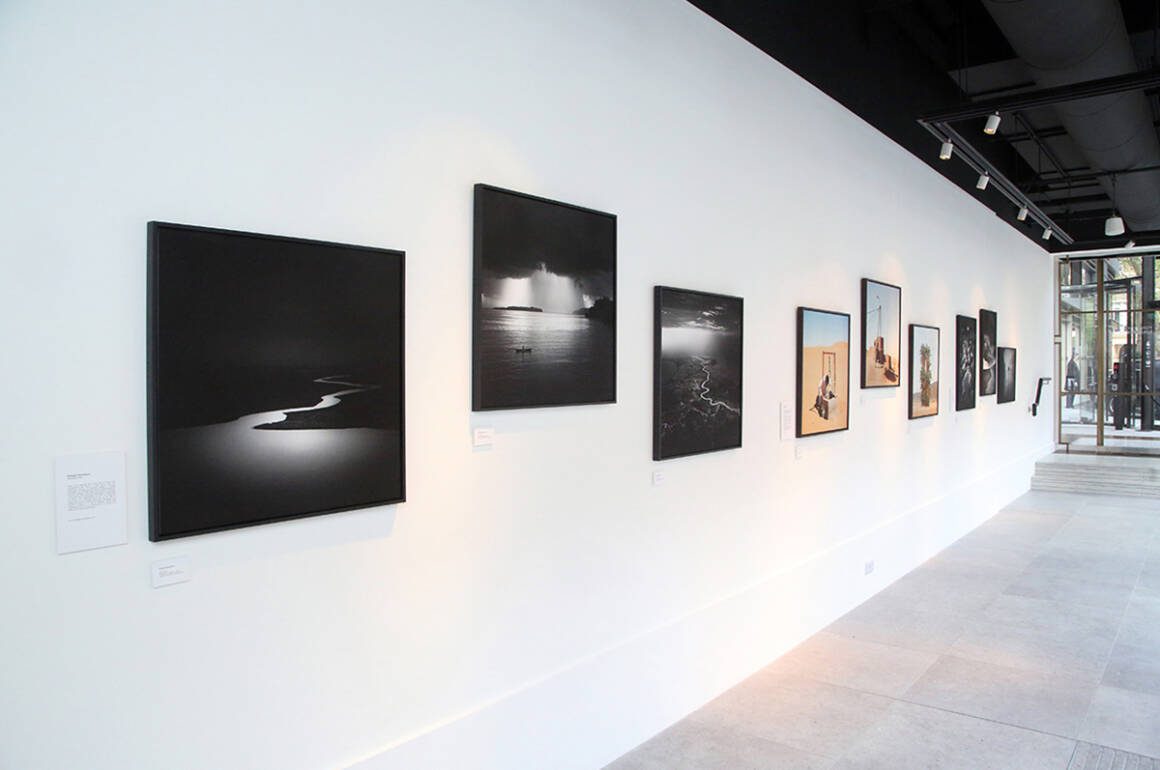







Recent Comments